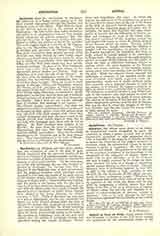

Apparitor, the official name given to an officer in ecclesiastical courts designated to serve the summons, to arrest a person accused, and, in ecclesiastico-civil procedure, to take possession, physically or formally, of the property in dispute, in order to secure the execution of the judge’s sentence, in countries where the ecclesiastical forum, in its substantial integrity, is recognized. He thus acts as constable and sheriff. His guarantee of his delivery of the summons is evidence of the knowledge of the summoned of his obligation to appear, either to stand trial, to give testimony, or to do whatever else may be legally enjoined by the judge; his statement becomes the basis of a charge of contumacy against anyone refusing to obey summons. The new summary form of procedure, granted by Leo XIII in 1880 to the bishops of Italy, provides, in article XIV, for the elimination of this officer, yet necessary in some ecclesiastical courts: “Wherever for the summons and notifications there is not at hand an apparitor of the court, the defect may be supplied by designating a reliable person who shall certify to the fact, or by use of the system of registry of letters, where this prevails, and whereby is required an acknowledgment of delivery, receipt, or rejection.” This is in force likewise in the form of procedure appointed for the Church in the United States.
R. L. BURTSELL

